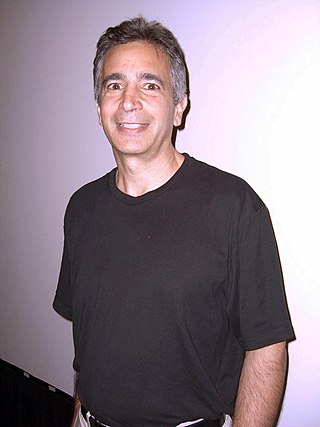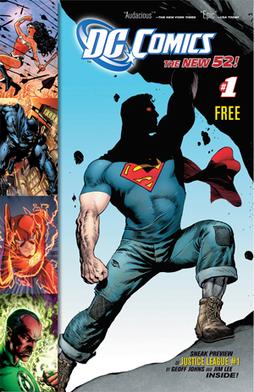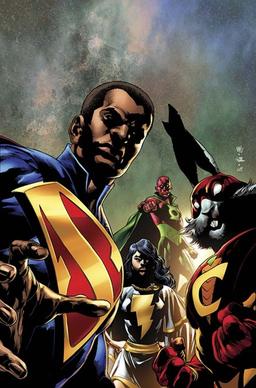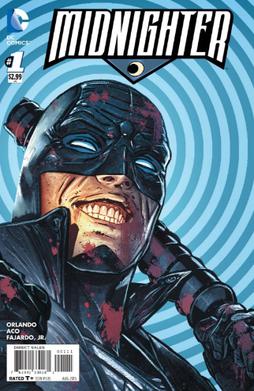
The Birds of Prey is a superhero team featured in several American comic book series, miniseries, and special editions published by DC Comics since 1996. The book's premise originated as a partnership between Black Canary and Barbara Gordon, who had adopted the codename Oracle at the time, but has expanded to include additional superheroines. The team name "Birds of Prey" was attributed to DC assistant editor Frank Pittarese in the text page of the first issue. The group is initially based in Gotham City and later operates in Metropolis and then relocates once more to "Platinum Flats", California, a new locale introduced in Birds of Prey in 2008.

The Black Canary is the name of two superheroines appearing in American comic books published by DC Comics: Dinah Drake and her daughter Dinah Laurel Lance. The original version was created by the writer-artist team of Robert Kanigher and Carmine Infantino, the character debuted in Flash Comics #86.

Bill Jemas is an American media entrepreneur, writer, and editor, known for his tenure as president of Fleer Entertainment Group during the 1990s, and for his work as vice president of Marvel Comics from 2000 to 2004. During his time at Marvel, Jemas and editor-in-chief Joe Quesada implemented Marvel's no-overship policy, newsstand compilation magazines, added the Marvel MAX line, fortified the Marvel Knights imprint, removed the Comics Code from Marvel books, increased Marvel's publication of trade paperbacks, and were credited with shepherding the company from bankruptcy to profit, earning positive reviews from within and outside of the comics industry, though Jemas also was criticized for micromanagement and provocative public statements that made him a controversial figure.

Batgirl is the name of several fictional superheroines appearing in American comic books published by DC Comics, depicted as female counterparts and allies to the superhero Batman. Although the character Betty Kane was introduced into publication in 1961 by Bill Finger and Sheldon Moldoff as Bat-Girl, she was replaced by Barbara Gordon in 1967, who later came to be identified as the iconic Batgirl. The character debuted in Detective Comics #359 by writer Gardner Fox and artist Carmine Infantino, introduced as the niece/adoptive daughter of police commissioner James Gordon.

Barbara Gordon is a superheroine appearing in American comic books published by DC Comics, commonly in association with the superhero Batman. The character was created by television producer William Dozier, editor Julius Schwartz, writer Gardner Fox, and artist Carmine Infantino. Dozier, the producer of the 1960s Batman television series, requested Schwartz to call for a new female counterpart to the superhero Batman that could be introduced into publication and the third season of the show simultaneously. The character subsequently made her first comic-book appearance as Batgirl in Detective Comics #359, titled "The Million Dollar Debut of Batgirl!" in January 1967, by Fox and Infantino, allowing her to be introduced into the television series, portrayed by actress Yvonne Craig, in the season 3 premiere "Enter Batgirl, Exit Penguin", in September that same year.

Gen¹³ is a superhero team and comic book series originally written by Jim Lee and Brandon Choi and illustrated by J. Scott Campbell. It was published by WildStorm under the Image Comics banner, which went on to become an imprint for DC Comics, who continued publishing the Gen¹³ title. The comic features a loosely organized team of super-powered beings composed of five teens and their mentor.

Gail Simone is an American writer best known for her work in comics on DC's Birds of Prey, Batgirl, Dynamite Entertainment's Red Sonja, and for being the longest running female writer on Wonder Woman to date. Other notable works include Clean Room, Secret Six, Welcome to Tranquility, The All-New Atom, and Deadpool.

The Secret Six is the name of three different fictional comic book teams in the DC Comics Universe, plus an alternate universe's fourth team. Each team has had six members, led by a mysterious figure named Mockingbird, whom the characters assume to be one of the other five members. The third, anti-heroic incarnation of the Secret Six was rated by IGN as the fourth Best Comic Run of the Decade in 2012.

Catman is a character appearing in comic books published by DC Comics. He is part of Batman’s growing roster of enemies, debuting in the mid-1960s.

Dale Eaglesham is a Canadian comic book illustrator who has been working in the American industry since 1986. He is best known for his work on titles like Conan, Punisher, Green Lantern, Villains United, Justice Society of America and Fantastic Four. In 2008, the Shuster Awards selected him as Outstanding Canadian Comic Book Artist of the year.

Nicola Scott is a comics artist from Sydney, Australia whose notable works include Birds of Prey and Secret Six. In 2016, she and writer Greg Rucka relaunched Wonder Woman for DC Comics Rebirth and created the comic series Black Magick, which was published by Image Comics.
In American mainstream comics, LGBT themes and characters were historically omitted intentionally from the content of comic books, due to either formal censorship or the perception that comics were for children and thus LGBT themes were somehow inappropriate. With any mention of homosexuality in mainstream United States comics forbidden by the Comics Code Authority (CCA) until 1989, earlier attempts at exploring these issues in the US took the form of subtle hints or subtext regarding a character's sexual orientation. LGBT themes were tackled earlier in underground comix from the early 1970s onward. Independently published one-off comic books and series, often produced by gay creators and featuring autobiographical storylines, tackled political issues of interest to LGBT readers.

Superman: Earth One is a series of graphic novels written by J. Michael Straczynski and illustrated by Shane Davis. The series is a modernized re-imagining of DC Comics' long-running Superman comic book franchise as the inaugural title of the company's Earth One imprint. Earth One's Superman exists alongside other revamped DC characters in Earth One titles, including Batman: Earth One and Wonder Woman: Earth One, as well as other graphic novels.
Women in Refrigerators (WiR) is a website created in 1999 by a group of feminist comic-book fans that lists examples of Women in Refrigerators Syndrome, a literary trope in which female characters are injured, raped, killed, or depowered, sometimes to stimulate "protective" traits, and often as a plot device intended to move a male character's story arc forward, and seeks to analyze why these plot devices are used disproportionately on female characters.

The New 52 is the 2011 revamp and relaunch by DC Comics of its entire line of ongoing monthly superhero comic books. Following the conclusion of the "Flashpoint" crossover storyline, DC cancelled all its existing titles and debuted 52 new series in September 2011. Among the renumbered series were Action Comics and Detective Comics, which had retained their original numbering since the 1930s.

"Batman: Death of the Family" is a 23-issue comic book story arc first published by DC Comics in 2012 featuring the fictional superhero Batman and his family of supporting characters. The arc spans several titles featuring characters of the Batman family including: Batman, Batgirl, Batman and Robin, Catwoman, Detective Comics, Nightwing, Red Hood and the Outlaws, Suicide Squad, and Teen Titans. The story involves the return of Batman's archenemy, the Joker, and his plan to destroy all of the people Batman has come to rely on over the years: the multiple Robins, Batgirl, Catwoman, Alfred Pennyworth, and Commissioner James Gordon. The title is a reference to the classic Batman story arc "A Death in the Family" (1988), in which the Joker murders Jason Todd.

"Trinity War" is an 11-issue comic book story arc first published in 2013 by DC Comics, featuring the fictional superhero teams the Justice League, Justice League of America, and Justice League Dark. The arc spans several titles, including Justice League, Justice League of America, Justice League Dark, Constantine, Trinity of Sin: Pandora and Trinity of Sin: The Phantom Stranger. The story is an action-mystery that sees the Justice League, Justice League of America, and Justice League Dark clash, in order to solve the mystery of Pandora's Box. The event also introduces the Crime Syndicate and the reveal of Earth-3 to The New 52.

The Multiversity is a two-issue limited series combined with seven interrelated one-shots set in the DC Multiverse in The New 52, a collection of universes seen in publications by DC Comics. The one-shots in the series were written by Grant Morrison, each with a different artist. The Multiversity began in August 2014 and ran until April 2015.

Earth One (EO) is an imprint of graphic novels published by DC Comics, featuring re-imagined and modernized versions of the company's superhero characters from the DC Universe. Those characters include Superman, Batman, Wonder Woman, Green Lantern, and the Teen Titans, as well as others whose characteristics and origin stories are revised and altered to suit the 21st century audience. The shared universe, unlike the original DC Universe in comic books, has yet to cross over its common plot elements, settings, and characters. The reality of Earth One is designated as Earth-1 as part of the DC Multiverse.

Midnighter is an American comic book series published by DC Comics and written by Steve Orlando that ran for twelve issues from June 2015 to July 2016, featuring Midnighter as its protagonist. The series is also known as Midnighter to differentiate itself from the character's previous series first published by WildStorm in 2006.


















